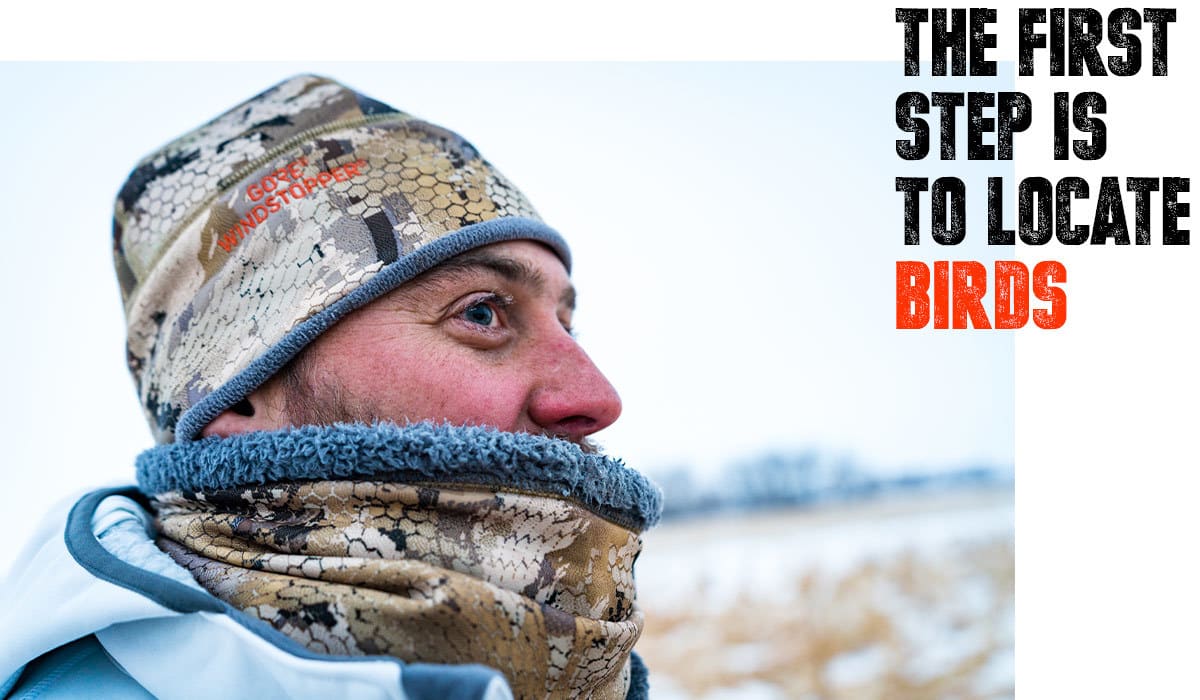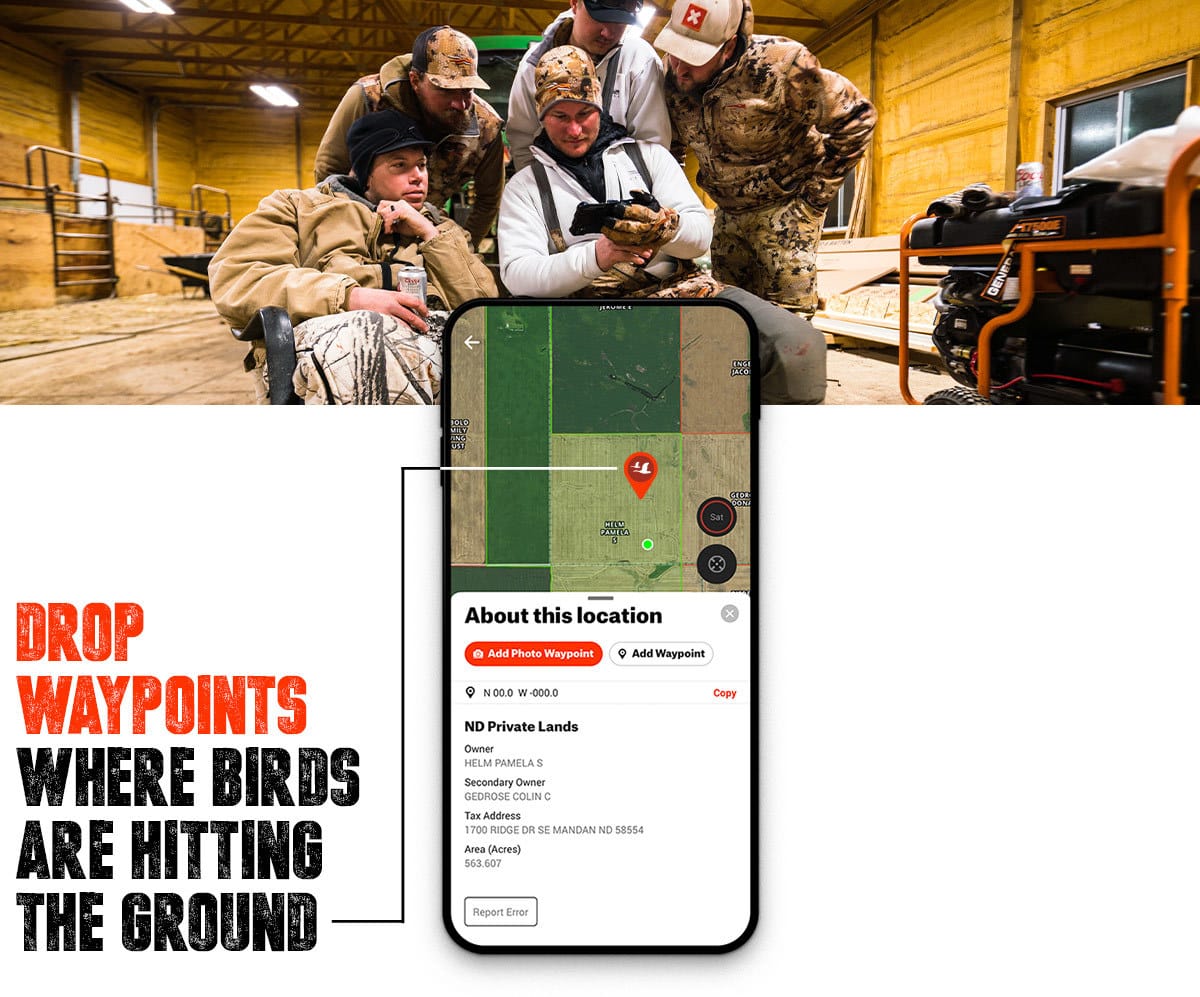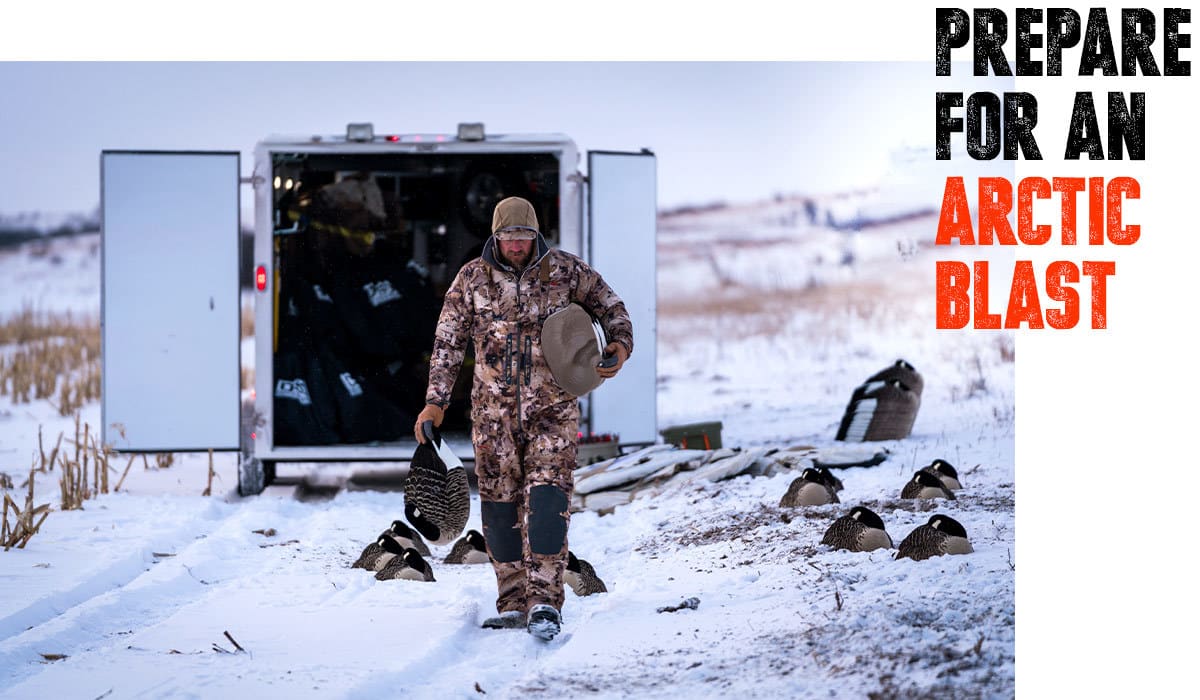Watch the latest installment of our Anyone’s Hunt series as we explore a great over-the-counter waterfowl opportunity in North Dakota.
With waterfowl seasons that start in August and go all the way into January, North Dakota is a great place to hunt. The state has liberal access laws for private lands where birds may reside and thousands of migrating birds. The hunting opportunities are rich and available to anyone. For the latest installment of Anyone’s Hunt, Steven Drake, Matt McCormick, Brady Davis, and onX Hunt Product Manager Matt Seidel head to North Dakota for a late-season waterfowl hunt. What follows is an in-depth breakdown of that opportunity.
The Missouri River is the main artery for birds migrating south. While most other bodies of water will freeze up and cause birds to head south, the Missouri doesn’t. This provides roosting ground for thousands of birds in the cold, late-season weather and is why there’re so many birds, especially geese, in North Dakota.

Waterfowl season starts in August and ends in early January in North Dakota. To catch the peak of the southerly migration, the Anyone’s Hunt team went in the first week of December. Matt McCormick, Brady and Steven drove nine hours from Montana with a trailer full of decoys and gear, while Matt Seidel flew into North Dakota. For a full breakdown of all the gear the team brought and logistics for this hunt, watch Episode 1 below.
This is a very affordable hunt, especially when sharing costs between four hunters. Below is a cost breakdown of doing a four-day hunt with two days of travel.
- Fishing, Hunting, Furbearer Certificate – $2
- General Game and Habitat License – $20
- Seven-day ND waterfowl license (zone-specific) – $104
- Federal migratory bird stamp – $25
- Gasoline (1,500 miles @12 mpg @ $2.20/gallon) – $70 per person
- AirBNB for (four nights – $1,000) – $250/per person
- Food – $200
- Misc – $100
The total cost per person to do this hunt is roughly $770.
So, you’ve made it to North Dakota, have your licenses, and are ready to hunt—now what? The first step is to locate birds and spend an afternoon scouting waterfowl to learn where the birds are roosting on the river and where they’re feeding. From there, you’ll want to knock on doors and gain permission from landowners to hunt their fields the next day.

One beneficial feature of the onX Hunt App is that as you’re driving around scouting fields, you can actively mark the locations of where birds are hitting the ground. When you click on private lands within the App, you’ll get the name and address of the landowner. This makes it incredibly simple to track down the landowner and potentially gain permission to hunt fields where birds are feeding for the next day.

In Episode 2, the team arrives to North Dakota, gets two days of hunting under their belts, and encounters some unique challenges. Watch below.
North Dakota has a time-of-day restriction for the late season. The regulations read:
Legal Shooting Hours for 11/27 – End of Season
- Mon/Tues/Thurs/Fri: 30 minutes before sunrise until 2 p.m.
- Wed/Sat/Sun: 30 minutes before sunrise until sunset.
- Always refer to hunting regulations as they are subject to frequent change
The challenge this creates is that when the temperatures are brutally cold, the birds will often not fly to their feeding grounds until after 2 p.m. This made for difficult hunting for the Anyone’s Hunt team as they scheduled their hunt mid-week. However, on Wednesday they were able to hunt past 2 p.m. and filled their limit. Watch all the action in Episode 3 below.
If you’re planning to do this late-season hunt, we’d advise you schedule your first day of hunting for Thursday or Friday. Utilize those days to scout after 2 p.m. On Saturday and Sunday, you can hunt past 2 p.m., which is when most of the birds fly, then start your travel home on Sunday night. Lastly, prepare for an arctic blast and bring all the hand warmers and warm clothes you own!
